Although the new Spirit was already out-dated at the time of its debut and was not competitive against the most modern competition, it was at least bigger and more spacious at a competitive price, without lowering the comfort and having some finishes and accessories in common with upper segment models.
Surviving alone is always difficult because, when you have no alliances or supporters, you have to look at everything carefully to limit costs, offering products that sell well and match the needs of buyers. For a certain period of time American Motors, which came about in 1954 when the Nash-Kelvinator Corporation merged with the Hudson Motor Car Company, succeeded, even becoming the fourth biggest American car manufacturer thanks to interesting products and affordable prices which were competitive against the Big Three. However, if the beginnings were rosy, poor management choices brought the successful small brand to a ruinous collapse, many attributing the failure to two models in particular: the Gremlin, the company’s first compact car, which was actually moderately successful due to its economic pricing, at least in its early years, but the questionable design and poor reliability contributed to undermine the image of the Kenosha manufacturer; and the Pacer, characterised by an extremely original design but which combined too-high production costs with lower than expected sales.
Finding themselves sailing in dangerous waters and having a dated product range, AMC embarked on designing a new car to replace the Gremlin, with limited resources at their disposal. It was necessary to re-use many elements of the Gremlin in the new design, which already shared its platform and engines with another of the manufacturer’s models, the Hornet, in production since 1970, so the mechanicals were certainly tried and tested, but since it was not a new platform the weight was greater than that of the competition, which of course affected consumption.
Richard A. Teague (1923 – 1991), the brand’s long-serving designer, succeeded in designing an elegant car, characterised by the possibility of choosing between two body styles: Liftback or Coupé with sporty lines or Saloon, with more space for the rear passengers and for luggage, which very much echoed the earlier Gremlin. At the time of launch the available engines were the 2.0 four-cylinder Audi-derived unit (replaced the following year by a 2.5-litre Pontiac engine), the in-line six cylinder 3.8 and 4.2-litres and the 5-litre V8, all combined with a 3-speed automatic or 4-speed manual gearbox. There was also a wide choice of trim, from the base through the intermediate De Luxe up to the sporty AMX, as well as special editions and versions that you can follow over the years.
Although the new Spirit was already out-dated at the time of its debut and was not competitive against the most modern competition, it was at least bigger and more spacious at a competitive price, without lowering the comfort and having some finishes and accessories in common with upper segment models. From 1981, along with the whole AMC range, a new Eagle division was proposed, created by relying on the technology of the Jeep brand, also part of the group’s galaxy of models, with the names SX/4 (Liftback) and Kammback (Saloon), adopting four-wheel drive hardware on demand and occupying a rung lower than what can be called the lowest of the Sport Utility Vehicle ranges, anticipating years of a constantly-growing segment right up to the present day.
From 1983 only the 4.2-litre engine was offered in the Spirit and the Coupé body was dropped from the range at the end of that year, replaced by the new Renault Alliance, developed from the French Renault 9 model and produced in the historic American factory, which began the collaboration of the two manufacturers, lasting until 1987, when Renault sold its shares to Chrysler, retaining only the Eagle division, which carried on for a few years focusing only on the charismatic Jeep brand. Thus the curtain fell on American Motors and its brave history made up of highs and lows, of original choices that anticipated today’s fashions and customs, and no less important was the Spirit, the last model developed by the brand that in its fairly short production life even achieved a memorable result at the 1979 Nürburgring 24 Hours, where two AMX models were placed 25th and 43rd out of 120 entrants and first and second places in their class, beating cars from well-known and more famous brands, but sadly few will remember them in years to come.
Text by Tommaso Lai
Translation by Norman Hawkes
Copyright © Cars Forgotten Stories. All rights reserved.










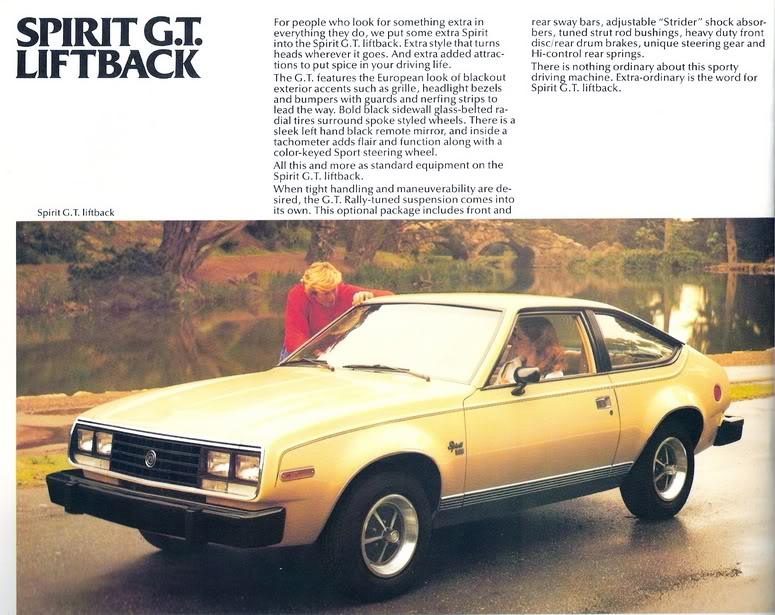


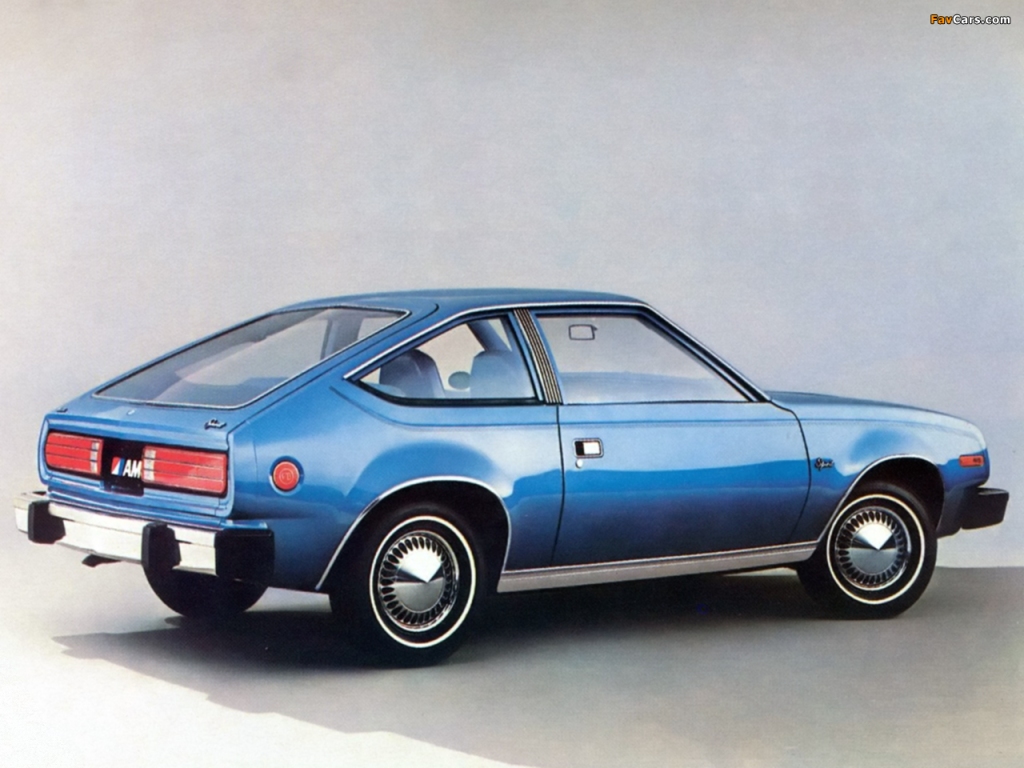

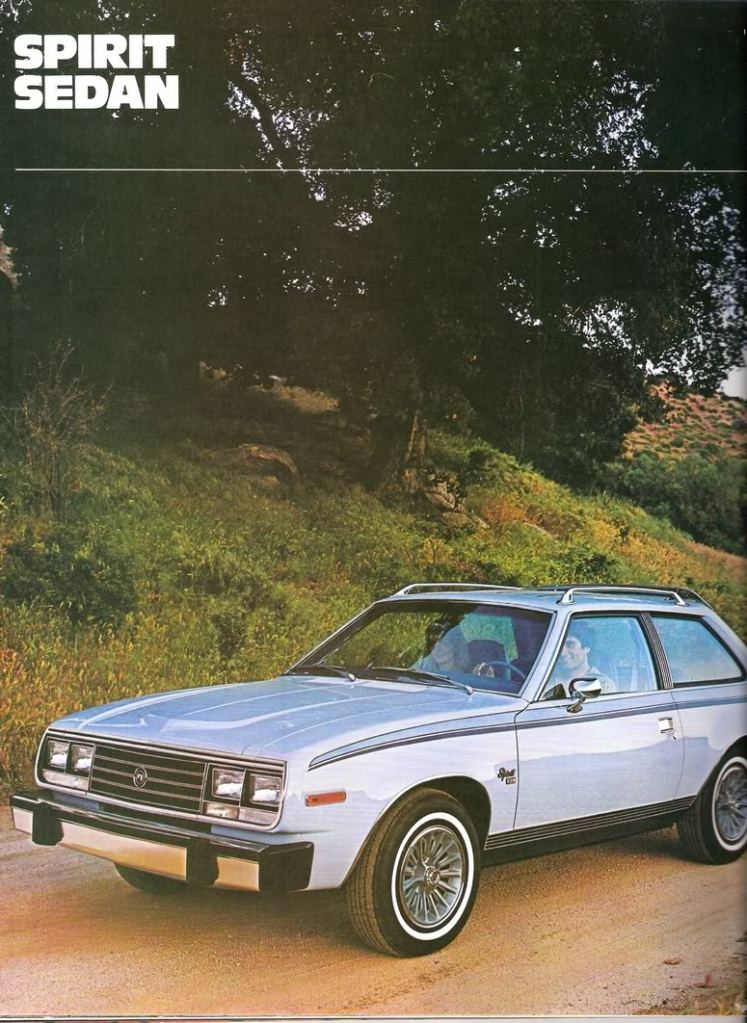





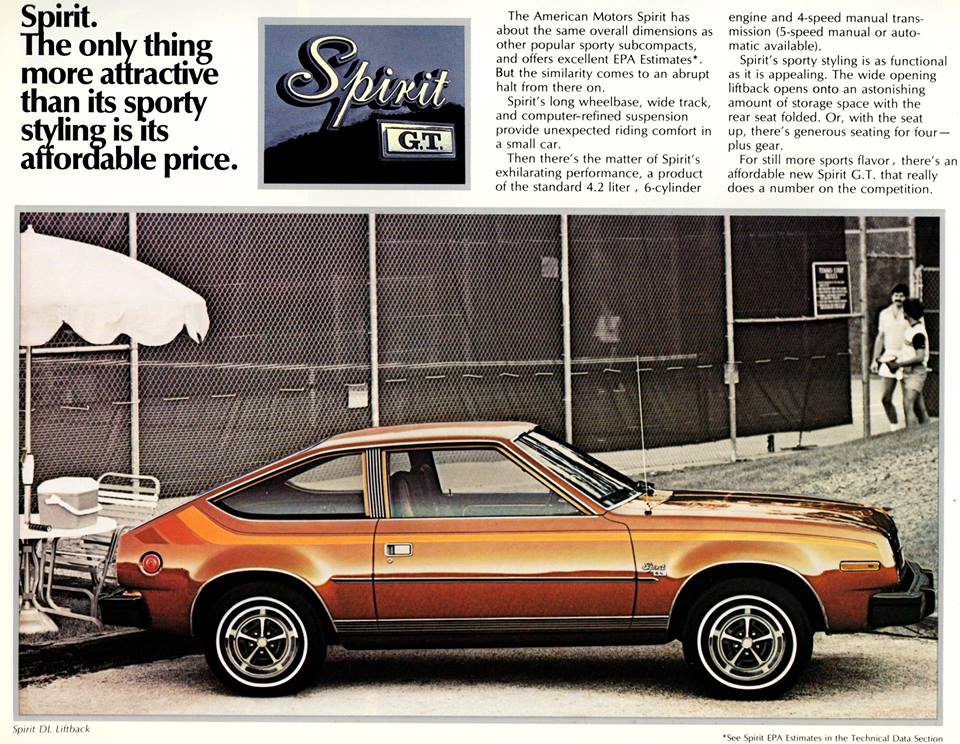




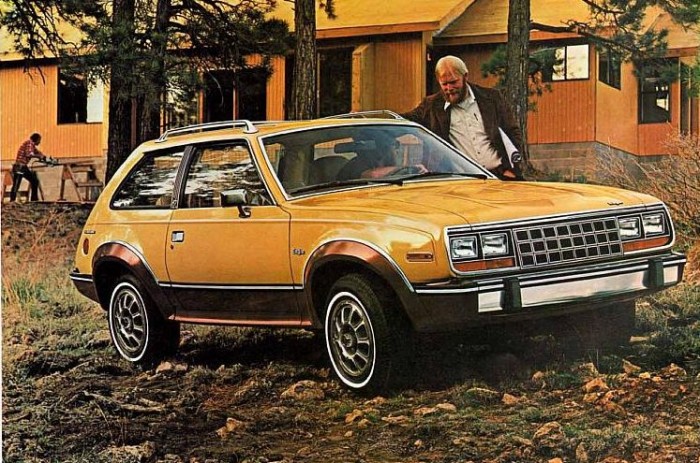

This write up is very confusing. The Spirit was never a brand of Eagle Car. The Spirit was the AMC Gremlin which was in 1979 updated in styling and had a name change in the USA. It remained as the AMC Gremlin in the Rest of the world. Eagle was a line of Cars from AMC which featured AWD configurations, that was their claim to fame. Based on the Spirit/Gremlin or Concord Sedan and Wagon. By 1985, The Eagle line of car became part of the Jeep Division of AMC. When Chrysler acquired all the Shares of AMC, from the Stock Market and from Renault who held, 46%, AMC was rolled into Chrysler as the Jeep Eagle Division. The Eagle Premier launched in 1988 was AMC’s last designed autombile, not the Spirit. AMC using internal and external design firms created the Premier which was originally to be marketed as a Renault but with the exit of Renault in the USA, Chrysler decided to use the Eagle Name. AMC’s Eagle line of cars for 1988 included the original Sports Wagon based on the AMC Hornet Sportable/Concord Wagon design and also the Premier. At the same time, Chrysler applied the Eagle name to the Mitsubshi Imports so that every Jeep and Eagle Dealer had a full range of cars, from sub compact cars to full sized Eagle Premier and then a full line of Jeep SUV’s and Light Trucks. Chrysler like other manufactures that have rationalized the removal of Brands eliminated Eagle and Plymouth to focus only on Dodge, Jeep and Chrysler.
"Mi piace"Piace a 1 persona
Hi, first of all I wanted to thank you for your opinion. However, I would like to focus on a few points:
The Spirit was part of the Eagle sub-brand, like all AMC models and in particular, the Spirit 4×4, was marketed from 1980 to 1983 under the name of SX / 4 and Kammback.
Regarding the Premier, I do not consider it the latest model of AMC, since it is not a pure AMC, since it was developed on Renault mechanics, and since it was never marketed as AMC, but as Renault and later as Eagle. The style of the Premier was followed by the AMC team of designers, but with the contribution of Ital Design for the exterior design.
"Mi piace""Mi piace"